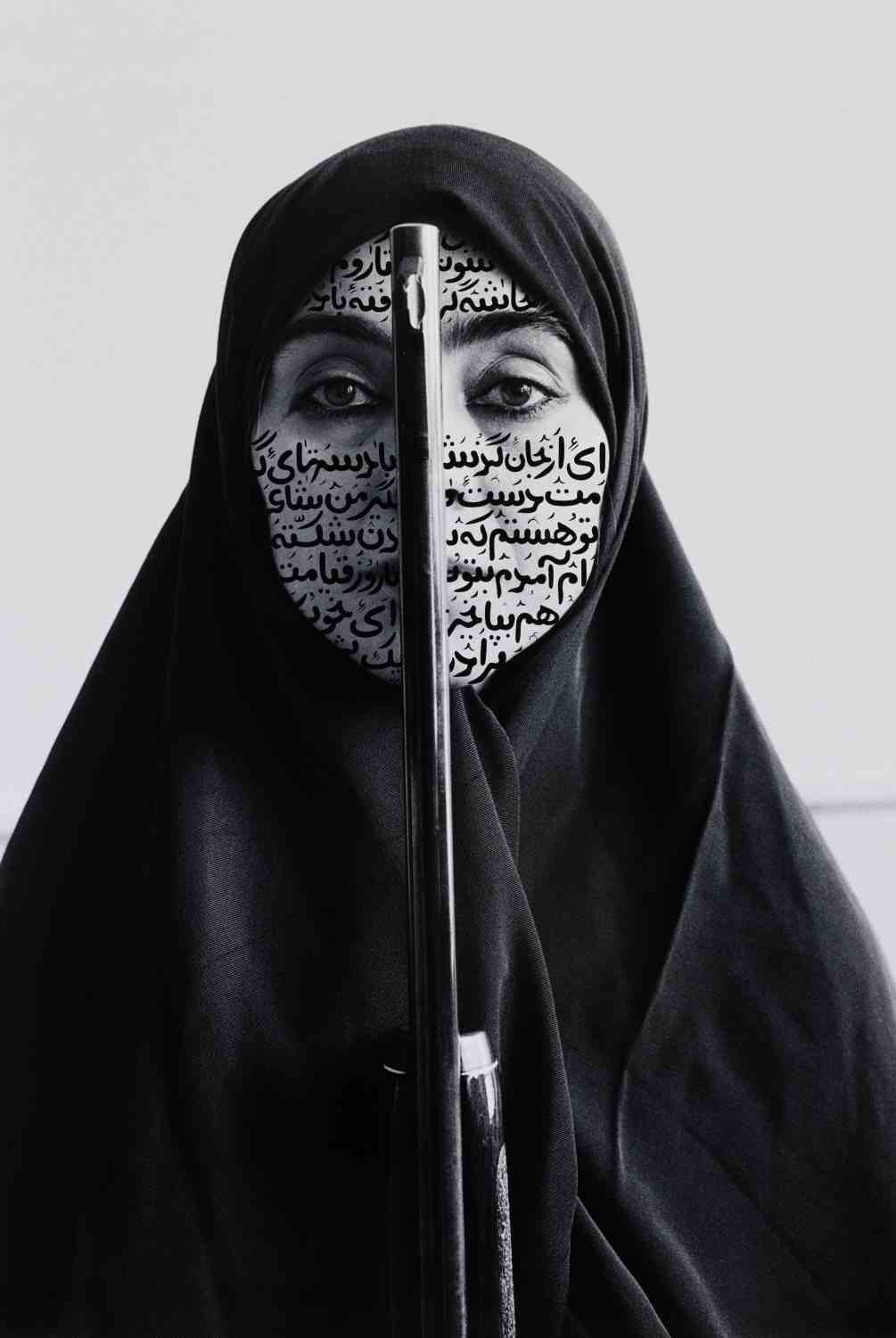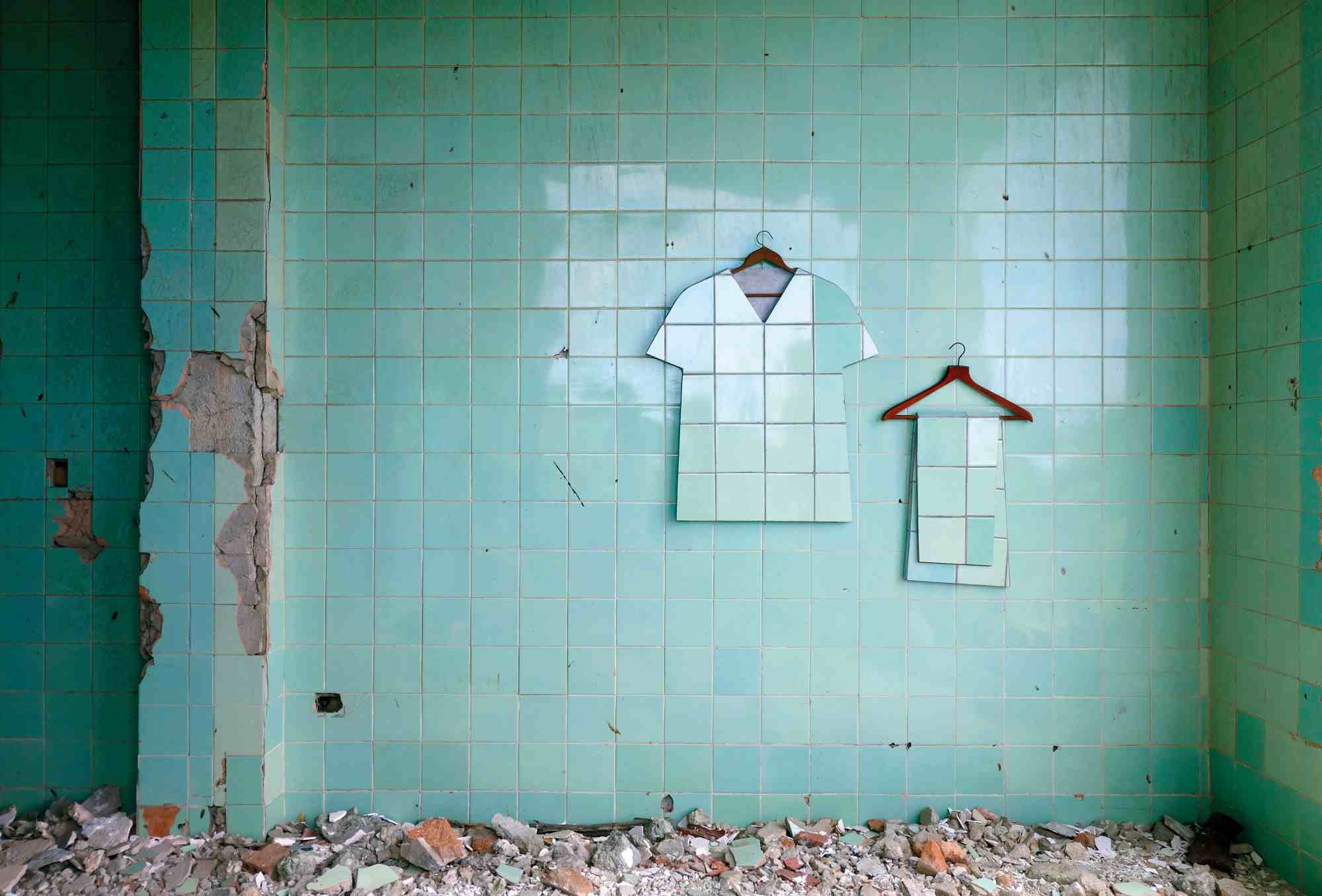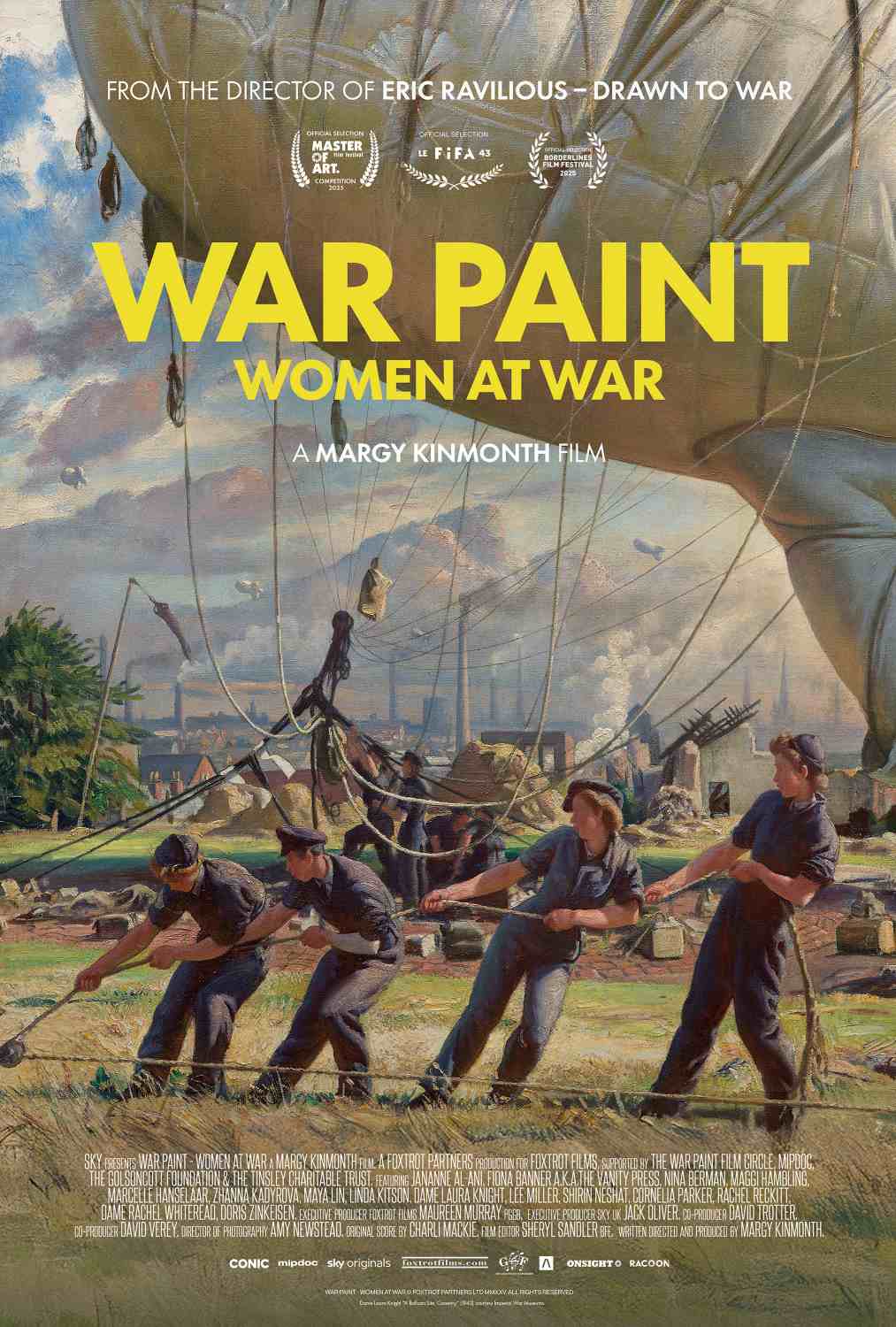Louise Jones reviews 'WAR PAINT: Women at War'
'Ruby Loftus Screwing A Breech Ring,' by Dame Laura Knight | Image courtesy of: Imperial War Museums / Conic
3 min read
A compelling exploration of the work of female artists on the frontlines, Margy Kinmonth’s powerful film explores women’s perspectives on war – and doesn’t shy away from looking at the use of rape as a weapon
In the late 11th century, a group of women needleworkers in Kent were hard at work with a very important commission. Their task was to depict no less than one of the most momentous events in history: the Norman conquest of England. But amongst the scenes of lordly embassies and glorious battles, one of these women, who were probably all Anglo-Saxon, snuck into a small part of the border a scene that hints at what the war might have meant for women like her: namely, the rape of a woman.
 Rebellious Silence from the series Women of Allah by Shirin Neshat | Image courtesy of Shirin Neshat / Conic
Rebellious Silence from the series Women of Allah by Shirin Neshat | Image courtesy of Shirin Neshat / Conic
This work was of course the Bayeux Tapestry and its depiction of rape is just one of the overlooked stories explored in War Paint – Women at War, a new documentary by Margy Kinmonth. More than just highlighting underappreciated female war artists, like Lee Miller and Rachel Reckitt, Kinmonth seeks to answer a deeper question: what do women see in war that men don’t?
To answer this, the documentary spans the early 20th century to today. Some artists, like Dame Laura Knight, centre the female wartime experience, painting Second World War factory workers. Others juxtapose war’s brutality with domestic life, such as a Ukrainian artist’s church organ built from missile casings, or clothing made from shattered tiles of bombed homes.
Kinmonth also examines how women make war art. Needlework, though rarely celebrated (can you name a famous sewer?), has long been a medium for war narratives; the Bayeux Tapestry finds its modern counterpart in quilts depicting life in a Japanese prison camp. An ironic contrast is the backlash against the polished black granite used by Maya Lin for the Vietnam War Memorial. Apparently, this is too “feminine” a rock. Perhaps she should have just knitted it instead.
Kinmonth seeks to answer a deeper question: what do women see in war that men don’t?
 Second Hand by Zhanna Kadyrova | Image courtesy of Zhanna Kadyrova / Conic
Second Hand by Zhanna Kadyrova | Image courtesy of Zhanna Kadyrova / Conic
The methods of fighting have certainly changed exponentially since the Bayeux Tapestry was made, but the link between that and photography in the Vietnam War show that rape’s use as a weapon to destroy women, families and communities is still, sickeningly, the same. This documentary does not shy away from this difficult but important subject with some very powerful art.
 For me as a veteran of the Afghanistan war, what I thought was missing in the documentary was art relating to that conflict or female soldiers in general. This war saw women serving on the frontline for the first time and of course ended in the victory of the Taliban, a movement defined by the erasure of women from humanity. Though lasting for 20 years and ending just four years ago, this war seems invisible now in public discourse and seemingly so also in art.
For me as a veteran of the Afghanistan war, what I thought was missing in the documentary was art relating to that conflict or female soldiers in general. This war saw women serving on the frontline for the first time and of course ended in the victory of the Taliban, a movement defined by the erasure of women from humanity. Though lasting for 20 years and ending just four years ago, this war seems invisible now in public discourse and seemingly so also in art.
This is perhaps the real question at the heart of War Paint: what and who gets remembered, and what and who gets forgotten? Whether the experiences of the makers of the Bayeux Tapestry or the lives of women in modern day Ukraine, this documentary is a compelling exploration of what it means to be female and at war.
Louise Jones is Labour MP for North East Derbyshire
WAR PAINT: Women at War
Directed by: Margy Kinmonth
Broadcaster: Selected cinemas from 28 March 2025
